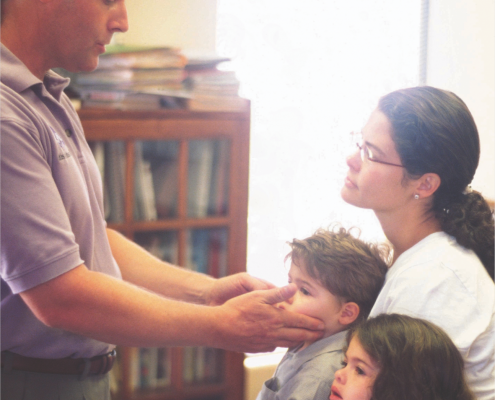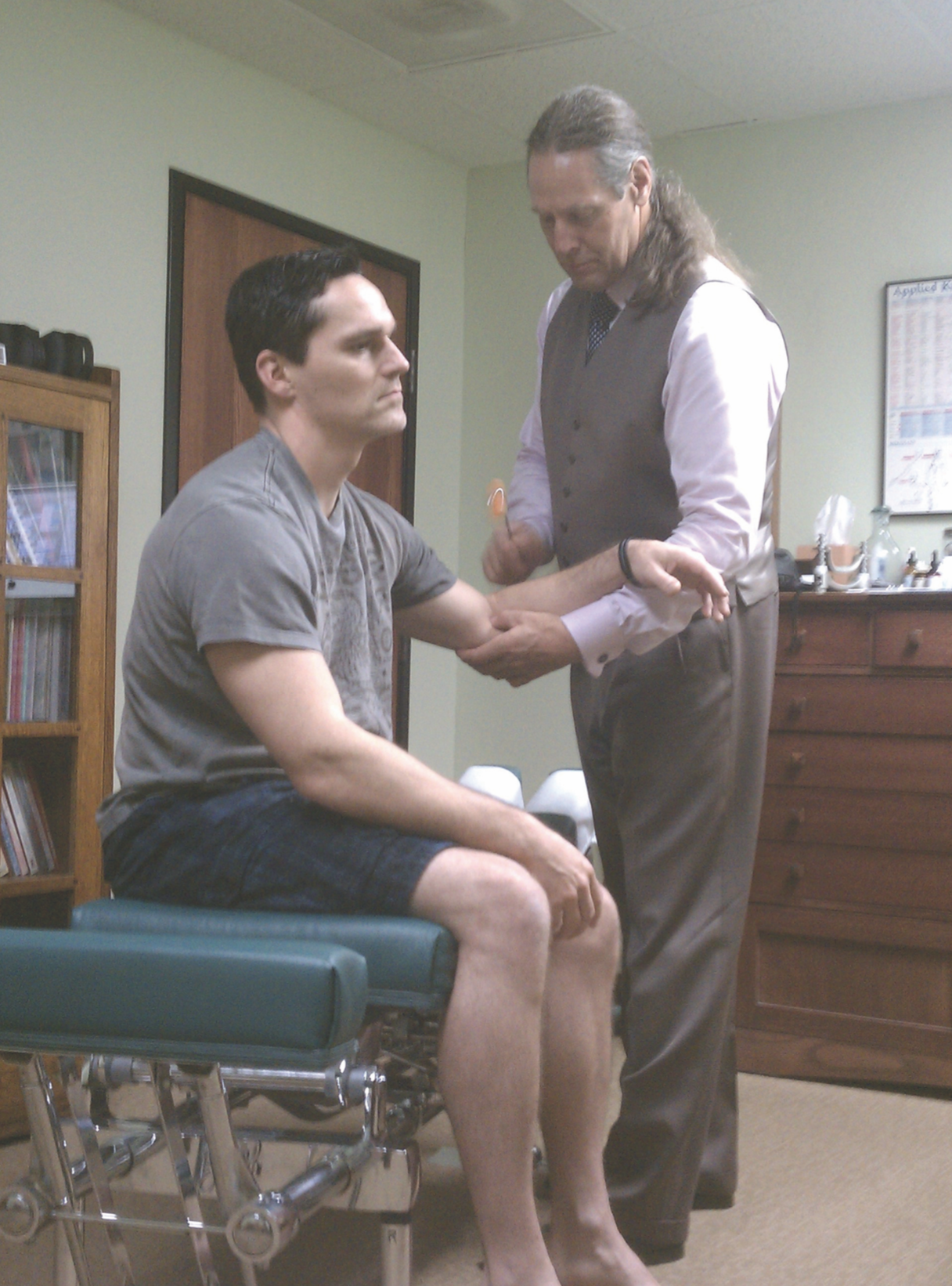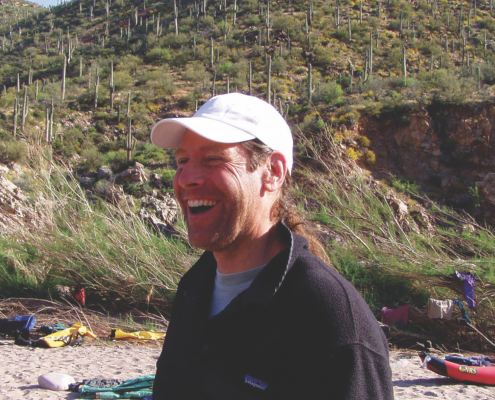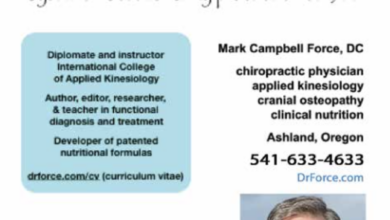Dr. Mark Force The Heart of Practice… and How We Heal
“There are no healers and we are all healers.” Says Dr. Mark Force, chiropractic physician of over 28 years of experience. Further, Dr. Force states, “People heal themselves, though they often need someone to serve as a catalyst and/or a guide. Basic healing just happens naturally. Healing from chronic and/or complex illnesses takes structure and discipline.”
Dr. Force has been passionate about what he calls “the work” since suffering from chronic fatigue immunodeficiency syndrome as a teenager and found it was “alternative” methods – fasting, diet, yoga, meditation, breath work, qigong, juicing, clinical nutrition, chiropractic, naturopathy, cranial osteopathy, acupuncture – that healed him.
Dr. Force has recently started a clinic here in Ashland after moving from Scottsdale, Arizona where he practiced for almost three decades.
Dr. Force thanks so much for taking the time to speak with me today. You’ve been living in Ashland for a few years, but only this year have you started practicing again. How do you like Ashland?
My wife and I love Ashland! We wanted to live in a smaller town where we could walk or bike to most everything we needed. We love the outdoors – hiking, backpacking, whitewater rafting; I like skiing and mountaineering. Ashland is so unique – a small town where you know your neighbors, the amenities and culture of a city, and the outdoors all around us.
For the last few years we’ve been doing some traveling and playing around the West and I’ve been researching, writing, and teaching. It’s great to be in practice again – I didn’t realize how much I missed it.
Dr. Force, I imagine that every community is different. What are some differences you see between your clientele in Scottsdale versus Ashland?
Ashland has a high concentration of seekers – people looking for experience, knowledge, understanding, and meaning. People here in Ashland tend to be open-minded and well-educated. That is certainly part of what makes Ashland such a rich and exciting place to live.
I have observed this seeking too often leads to having a veritable army of doctors, therapists, counselors, trainers, coaches, shamans, and others that many folks are continually seeing for their health and healing!
Over the years, I’ve become very clear that we don’t heal from doing more and more things; we heal from doing the right things.
I find this feedback interesting. I imagine you are not alone as a practitioner here in Ashland having such experiences.
I haven’t been practicing here in Ashland long and I don’t know a lot of practitioners here yet to know if that’s so, but it does appear true from observation.
Healthcare that’s efficient, meaningful, measurable and lasting requires structure and discipline from the doctor and the patient. A successful partnership requires that both parties have “both feet in” the process and there has to be good communication and mutual respect. There has to be trust – if you don’t believe your doctor knows what they’re doing and recommends what serves you, find another doctor.
Dr. Force, it seems that respect is vitally important and has to go both ways.
Yes! Respect in partnership and to the process of serving a patient to overcome the limitations associated with whatever condition brought them to me. Respect is the currency – the essential element – to successful outcomes.
Something you have mentioned both this year and last year in our talks together is that “Magic Happens.” You’ve seen this regularly in practice. Can you give us some examples?
When all the elements come together through focus and discipline, the magic happens. It’s amazing what people can heal from.
I’ve experienced the gift of seeing a man in his 30s with congestive heart failure from viral endocarditis and on a heart transplant list heal to nearly normal (ejection fraction increase from 18-45). He has his own heart and hikes with his kids. He saw clearly what was required and steeled himself to the task. Doing that work with him is an example of the magic that takes time, patience, and discipline.
I’ve experienced the gift of seeing a seven-year-old boy who’d been colicky as an infant and couldn’t remember a single day of his life that he hadn’t suffered severe “stomach” pain, see complete and permanent relief after a single chiropractic adjustment. We all cried when we saw his joyous smile that next day. Doing the work with that young boy is an example of the magic that comes from not doing a lot of things, but doing the right thing.
I’ve experienced the gift of shaking the hand of a woman who’d suffered from severe headaches, problems with her vision, and joint pain for years and instantly knowing her diagnosis – acromegaly. Referral to a brain surgeon to remove the tumor solved the condition. This is an example of the magic of “seeing with eyes that see” in order to have a patient get the care they most need.
This is the heart of practice – the essence. It magically appears when, as partners, we have exercised discipline, focus, and structure. When I teach docs, I will often say, “You can make magic happen. You can see it, feel it, and measure it in your patients. But, it doesn’t come cheap, you have to be passionate, dedicated, focused, and disciplined. You have to be committed to the process – the path – and then it will appear.”
Dr. Force, you are now moving into year two in Ashland. What are some of your goals for how you would like to best serve our community?
I hope to work with providers locally – exchanging ideas and methods, providing concurrent care for complex patients, collaborating, developing methodologies and formulas, and possibly researching, writing, publishing, and teaching.
There are remarkably talented and innovative people in the healthcare community here in Ashland and the Rogue Valley. Some whom I’ve met include Rick Kirschner, ND, Mark Heller, DC, Cory Tischauer, ND, and the master herbalist Donnie Yance. Tom Clunie is a very fine chiropractor and was so open-hearted and welcoming when I first started practicing. I look forward to connecting with more practitioners here.
Teaching self-care is vitally important. There are some really crazy ideas about self-care circulating out there and it’s important for people to have reliable information. I’ve written a book that teaches people how to use the functional medicine model for improving their self-care – Choosing Health.
I also lecture on self-care and healthcare topics regularly here in Ashland, have recorded webinars, and written a bunch of articles and research reviews. Much of that’s available on my website, DrForce.com. The homepage has a sign-up for a weekly email I put out that shares healthcare and self-care related links and resources and includes a calendar of lectures.
OLLI at SOU seems like a great program and I’d like to contribute to it. I’m also looking into having a weekly gathering for teaching exercise, stretching, self-care – physical, chemical, emotional – that is open and free to all and that includes other providers sharing their ideas and skills.
You have an extensive background in your training and education. Can you please say more about this?
Being sick with a post-viral (EBV) chronic fatigue immunodeficiency syndrome in my teens is why I do what I do. Conventional (allopathic) medicine didn’t help; natural healthcare and self-care healed me. So, I got passionate about it. I knew what it did for me and I knew what it could do for others.
I knew a chiropractic license would train me to reproduce the methods that had healed me. From there I’ve just kept going over the last 34 years. I rent a storage shed because I have so many books! I keep a database to keep track of articles, abstracts, and citations from the scientific literature like PubMed. I’m a diplomate and certified teacher for the International College of Applied Kinesiology, Fellow of the International Academy of Medical Acupuncture (note – I cannot use acupuncture needles under my Oregon chiropractic license).
I’ve developed nutritional and herbal formulas for Standard Process Labs and Biotics Research, been contributor and technical editor for reference manuals/books on lab diagnosis, functional diagnosis and treatment, lectured around the country – Portland, Washington, Denver, Miami, Phoenix, Detroit, Chicago, etc., and contributed to clinical outcome studies published in peer-review literature via in-office and in-hospital settings. Recently, I was granted a US patent for a nutritional formula I developed for chemical intolerance.
Dr. Force what types of conditions do you find yourself treating these days and what types of patients are best suited to work with you?
I used to have a long explanation for what I do. Lately, I’ve been telling people that I specialize in diagnosing and restoring function. Most illnesses are functional rather than pathological. Conventional medicine works well for trauma, acute infections, and pathologies. It’s not, however, the best tool for functional illnesses.
So, I’ve ended up treating both musculoskeletal and internal disorders, as long as they’re functional in nature, and have a general type of practice as a primary physician. With that type of practice, it’s vitally important to know when I’m not the right doc and referral is indicated. I’ve fired patients for not complying with my referral for conventional care when, in my opinion, it was necessary.
When working with people who have chronic and complex illnesses, how do you isolate the root of the problem? How do you structure your care to best work for a patient?
I assess their history, records, health surveys; I provide examinations (physical, neurological, orthopedic), laboratory testing, and imaging studies, as indicated. This is doing it by the numbers. Re-exams – meaningful care produces tangible and measurable results. It’s essential to measure what we got done and when we are done!
Applied kinesiology is core to my work. There is a lot of misunderstanding about applied kinesiology being muscle testing, but it is not. Muscle testing alone is no more applied kinesiology than a stethoscope is cardiology. Muscle testing is a tool that only becomes applied kinesiology once it is contextualized with an understanding of functional neurology and data from history, physical exams, lab findings, and/or imaging studies.
When used by a skilled practitioner, applied kinesiology becomes an incredibly useful tool to contextualize exam findings, understand connections, indicate the ideal treatment, observe response to care, and even lead to further examination. When done properly it is no more esoteric than testing the jerk reflex with a neurological hammer.
People often don’t heal because their nervous systems are disorganized from injuries, biochemical imbalances, and emotional stress. Getting a patient’s nervous system organized is the first thing I do – it’s the foundation upon which everything else is built.
Chiropractic, cranial osteopathy, and methods from applied kinesiology restore organization to the nervous system and produce improved body function that is objectively measurable.
Care is about outcomes – measurable, meaningful, and lasting outcomes. That means being fiercely on point while in the office. I teach patients how to report their status and progress and make sure they are clear about their responsibilities. Sometimes people believe I’ve been in the military! But, everything is done because its’ proven to work.
Everyone has a certain level of tolerance (metabolic tolerance) for how much treatment they can accept, integrate and benefit from at one time. This respects how the body heals incrementally. Treating beyond tolerance or having a patient do too much self-care at one time actually adds stress and impairs healing!
Too much treatment is readily observed neurologically – dilation of pupils, less mental focus, cooling of the skin, change in breathing pattern. If this occurs that treatment isn’t restorative – it’s just stressful.
Some patients get stuck on the idea that the more time I spend with them and the more things I treat the more they will get better. We don’t heal that way – it puts us on the trap of treating the same thing over and over again. If I can’t get a patient to understand this I have to release them from care because it’s then impossible to provide the results they and I want.
 Dr. Force, I really appreciate your straightforward approach. Are there any last thoughts or comments you would like to share with our readers?
Dr. Force, I really appreciate your straightforward approach. Are there any last thoughts or comments you would like to share with our readers?
My logo includes a lotus, which represents every patient I serve. Practice has convinced me that when people become well and whole, they tend to naturally find meaning through service to others in accord with their natural gifts and talents. This is beautiful to experience and inspires me.
Learn More:
Dr. Mark Force
233 Fourth Street Ashland
www.DrForce.com
(541) 633-4633


